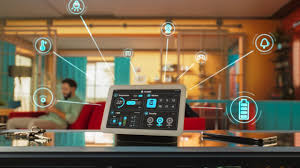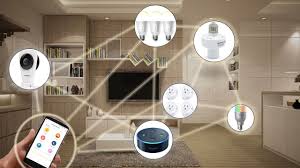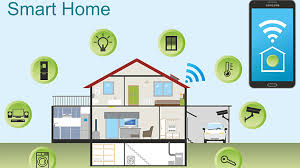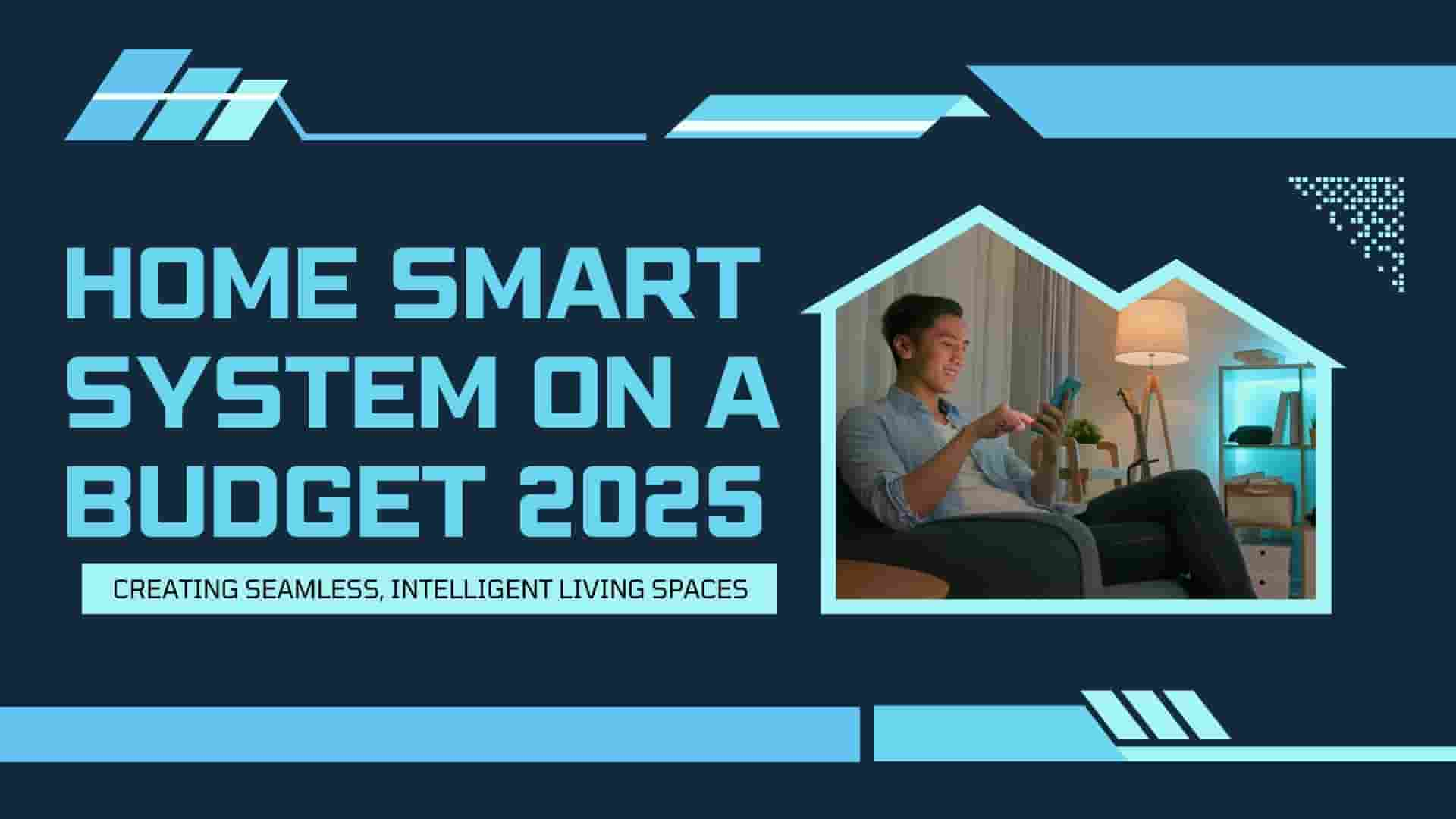What Is a Home Smart System?
A home smart system is like a personal assistant for your house, connecting devices like lights, thermostats, cameras, and plugs so you can control them remotely via an app, voice commands, or automated schedules. Think of it as giving your home a brain that listens to you (unlike your teenager or that stubborn pet). The beauty? You don’t need a tech degree or a trust fund to set one up. With budget-friendly devices starting at $10, anyone can dip their toes into home automation. Whether it’s turning off lights from your office or checking your front door camera while on vacation, a home smart system makes life easier, safer, and—dare we say—cooler.
Why Build a Home Smart System?
Why bother with a home smart system when you’ve survived this long without one? Well, it’s not just about flexing your tech-savvy side (though that’s a nice perk). Here’s why smart systems are worth your time and (minimal) dime.
Convenience at Your Fingertips
Ever stumbled out of bed to turn off a forgotten light or wished your coffee maker would start itself? A home smart system lets you control everything from your phone or with a quick “Hey, Alexa” or “OK, Google.” Set your lights to turn on at sunset or your fan to spin when you walk in—convenience level: superhero.
Energy Savings That Add Up
Smart devices aren’t just cool; they’re kind to your wallet. Smart thermostats can cut heating and cooling costs by up to 15%, and smart lights use less energy than traditional bulbs (Energy Star). Over time, these savings can pay for your home smart system—talk about a win-win!
Security for Peace of Mind
Worried about porch pirates or unexpected visitors? Smart cameras and doorbells let you monitor your home 24/7, even on a budget. Get alerts on your phone if someone’s at your door, or scare off intruders with a loud siren—all without pricey security contracts.
Pro Tip: Pair your system with our home security essentials for extra protection.
Read more: Remote Workers-Best 6 Cybersecurity Tips 2025
Essential Components of a Budget Smart System
Building a home smart system doesn’t mean buying every gadget in the store. Start with these core components, all affordable and beginner-friendly.
Smart Hub: Your System’s Brain
A smart hub (e.g., Amazon Echo Dot, Google Nest Mini) is the command center of your home smart system, connecting all your devices so they work together. Budget hubs start at $30 and support voice assistants like Alexa, Google Assistant, or Siri.
-
Why it’s key: Centralizes control for seamless operation.
-
Budget pick: Amazon Echo Dot (5th Gen) – $49.99.
-
Fun Fact: You can name your hub anything—like “Jarvis” for that Iron Man vibe.
Smart Lights: Bright and Affordable
Smart bulbs (e.g., TP-Link Kasa, Wyze) let you control lighting remotely, change colors, or set schedules. They’re energy-efficient and cost $10–$20 per bulb.
-
Why it’s awesome: Saves energy and creates instant ambiance.
-
Budget pick: Wyze Bulb Color – $14.99.
-
Use case: Set lights to glow blue for movie nights or red for date nights.
Smart Plugs: Instant Smartification
Smart plugs (e.g., Kasa Smart Plug Mini) turn any appliance into a smart one. Plug in your old lamp, fan, or even a Christmas tree, and control it via app or voice for $10–$15.
-
Why it’s a steal: Cheapest way to smartify non-smart devices.
-
Budget pick: Kasa Smart Plug Mini – $12.99.
-
Relatable moment: Forgot to turn off the curling iron? Smart plug to the rescue!
Smart Thermostats: Cool and Cost-Saving
Smart thermostats (e.g., Google Nest Thermostat) learn your habits and adjust temperatures to save energy, cutting bills by up to 15%. Budget models start at $80.
-
Why it’s worth it: Saves money long-term and keeps you comfy.
-
Budget pick: Google Nest Thermostat – $89.99.
-
Example: Set it to lower the AC when you’re at work—chaotic energy bills, begone!

Smart Security: Safety on a Budget
Affordable smart cameras (e.g., Blink Outdoor) or doorbells (e.g., Wyze Doorbell) offer live feeds and motion alerts for $50–$100. No subscriptions needed for basic features.
-
Why it’s essential: Affordable security for renters and homeowners.
-
Budget pick: Blink Outdoor Camera – $69.99.
-
Scenario: Catch that sneaky raccoon raiding your trash cans!
Bonus: Smart Speakers and Displays
Want to level up? Smart speakers (e.g., Echo Show 5) or displays add voice control and visual feedback, like showing your camera feed or recipes. Budget options start at $60.
-
Why it’s fun: Doubles as a mini entertainment hub.
-
Budget pick: Echo Show 5 – $89.99.
Read more: How to Create a Budget Smart Home: A Beginner’s Guide
Step-by-Step Guide to Set Up Your System
Ready to transform your home into a home smart system without a PhD in tech? Follow these six steps, and you’ll be automating your life faster than you can say “smart home goals.”
Step 1: Assess Your Needs
Before splurging, think about what you want your home smart system to do. Need better lighting control? Energy savings? Security for your apartment? Write down 1–2 priorities to keep costs low.
-
Example: A renter might focus on portable devices like smart plugs and bulbs.
-
Tip: Start with one room (e.g., living room) for a low-stakes test run.
Step 2: Pick Compatible Devices
Choose devices that work with the same platform (e.g., Alexa, Google Home, Apple HomeKit). Check product descriptions for compatibility to avoid a tech tantrum later.
-
Example: Wyze bulbs and Kasa plugs work with both Alexa and Google Assistant.
-
Hack: Look for “Works with [Platform]” badges on Amazon listings.
Step 3: Install Your Smart Hub
Plug in your hub, download its app (e.g., Alexa, Google Home), and connect to Wi-Fi. The app’s setup wizard is so simple, even your grandma could do it (no offense, Grandma).
-
Time estimate: 5–10 minutes.
-
Anecdote: I once set up an Echo Dot during a commercial break—true story!
Step 4: Connect Your Devices
Add devices to the app by scanning QR codes or following prompts. Name them something fun, like “Living Room Glow” for a bulb or “Coffee Boss” for a smart plug.
-
Pro Tip: Group devices by room in the app for easier control.
-
Example: Add a Wyze bulb and Kasa plug in under 5 minutes each.
Step 5: Automate Like a Pro
Create “routines” to automate tasks. For example, a “Morning” routine could turn on lights, start the coffee maker, and open smart blinds at 7 a.m.
-
Fun Routine: “Movie Night” dims lights, turns on the TV plug, and sets bulbs to purple.
-
App Tip: Use the app’s “Scenes” or “Routines” section to set these up.

Step 6: Test and Tweak
Test each device via the app or voice commands. If something’s off (e.g., a bulb won’t connect), check Wi-Fi strength or reset the device. Tweak routines for perfection.
-
Troubleshooting Hack: Restart your router if devices act stubborn.
Read more: How to Make a Smart Home in 2025 (Step-by-Step Guide)
Budget Hacks for Your Smart System
Building a home smart system doesn’t have to drain your savings. Here’s a detailed table of budget-saving strategies, plus extra tips to stretch your dollars.
|
Hack |
How It Saves Money |
Example |
|---|---|---|
|
Shop during sales |
Discounts of 20–50% on Black Friday, Prime Day, or Boxing Day. |
Snag an Echo Dot for $29.99 during Prime Day. |
|
Start small |
Buy 1–2 devices and add more over time. |
Start with a $15 smart plug and a $50 hub. |
|
Avoid subscriptions |
Choose devices with free cloud storage or local recording. |
Blink cameras offer free local storage with a Sync Module. |
|
Repurpose old devices |
Use smart plugs to upgrade old lamps or fans. |
Turn a $20 thrift store lamp into a smart one. |
|
Compare brands |
Check reviews on sites like CNET for budget-friendly options. |
Wyze bulbs ($14.99) vs. Philips Hue ($49.99). |
Additional Hacks:
-
Join deal alerts: Sign up for newsletters from TechRadar to catch flash sales.
-
Buy bundles: Retailers like Amazon often bundle hubs with bulbs or plugs for 10–20% off.
-
Check refurbished: Certified refurbished devices from Amazon or Best Buy can save 15–30%.
Common Mistakes and How to Avoid Them
Even tech enthusiasts trip up sometimes. Here’s how to sidestep common pitfalls when building your home smart system.
Buying Incompatible Gadgets
Not all devices play nice together. A Zigbee bulb won’t work with a Wi-Fi-only hub without a bridge. Fix: Check compatibility (e.g., “Works with Alexa”) before buying.
-
Example: Wyze cameras work with Alexa but not always HomeKit without tweaks.
Overcomplicating Automations
Setting up 20 routines on day one can fry your brain. Fix: Start with 1–2 simple routines, like “Goodnight” to turn off all lights.
-
Relatable moment: I once set a routine to flash lights every hour—total chaos!
Neglecting Wi-Fi Strength
Smart devices need solid Wi-Fi. A weak signal can cause delays or disconnects. Fix: Place your router centrally and consider a $30 Wi-Fi extender for large homes.
-
Tip: Test Wi-Fi speed with apps like Speedtest before setup.
Ignoring Security Updates
Outdated firmware can leave your home smart system vulnerable to hackers. Fix: Enable auto-updates in your hub’s app and check for updates monthly.
-
Pro Tip: Use strong, unique passwords for your Wi-Fi and smart home apps.

Real-Life Examples of Budget Smart Systems
Need inspiration? Here are three relatable setups for different lifestyles, all under $200.
The Renter’s Starter Setup ($120)
-
Who it’s for: Young adults or renters who need portable, landlord-friendly tech.
-
Components:
-
Amazon Echo Dot ($49.99)
-
Two Wyze Bulbs ($29.98)
-
Kasa Smart Plug ($12.99)
-
Wyze Cam v3 ($29.99)
-
-
What it does: Controls lights, monitors the front door, and smartifies a fan or lamp.
-
Why it works: Easy to install, no permanent changes, and movable when you relocate.
The Family Home Upgrade ($180)
-
Who it’s for: Parents juggling busy schedules and energy bills.
-
Components:
-
Google Nest Mini ($49.99)
-
Google Nest Thermostat ($89.99)
-
Two Kasa Smart Plugs ($25.98)
-
TP-Link Kasa Bulb ($14.99)
-
-
What it does: Saves on heating/cooling, automates kids’ bedtime lights, and controls appliances.
-
Why it works: Energy savings and routines simplify family life.
The Retiree’s Simple System ($150)
-
Who it’s for: Older adults wanting convenience and security.
-
Components:
-
Echo Show 5 ($89.99)
-
Blink Outdoor Camera ($69.99)
-
-
What it does: Offers video calls, voice-controlled music, and front-door monitoring.
-
Why it works: Simple setup and visual interface for tech-shy users.
FAQs About Home Smart Systems
1. What exactly is a home smart system?
A home smart system connects devices like lights, plugs, and cameras for remote or automated control via apps or voice. It’s perfect for convenience, security, and energy savings. Budget setups start at $50–$100, making them accessible for renters, families, or retirees.
2. Do I need a smart hub for a home smart system?
Not always, but a hub like the Echo Dot ($49.99) simplifies control by linking all devices. Without one, you’ll juggle multiple apps, which can feel like herding cats. Hubs ensure seamless automation and voice control for your home smart system.
3. Are home smart systems safe from hackers?
Most home smart systems use encryption and secure protocols. To minimize risks, use strong Wi-Fi passwords, enable two-factor authentication, and update firmware regularly. Stick to reputable brands like Wyze or TP-Link to avoid security vulnerabilities.
4. How much does a budget home smart system cost?
A basic home smart system costs $100–$200, including a hub ($30–$50), bulbs ($10–$20 each), plugs ($10–$15), or a camera ($50–$70). Sales like Black Friday or bundles can cut costs by 20–30%, so shop strategically.
5. Can I expand my home smart system later?
Yes! Start with a hub and one device, then add more as your budget allows. Platforms like Alexa or Google Home support thousands of devices, so your home smart system can grow with your needs—think of it like LEGO for tech.
6. Do I need a strong Wi-Fi for a home smart system?
A reliable Wi-Fi connection is crucial for your home smart system. Weak signals can cause delays or disconnects. Ensure your router supports 2.4 GHz (most smart devices use it) and consider a $30 extender for larger homes.
7. Can renters use a home smart system?
Absolutely! Renters can use portable devices like smart plugs, bulbs, and cameras that don’t require permanent installation. A home smart system under $150 (e.g., Echo Dot + Wyze Cam) is renter-friendly and easy to take when you move.
Conclusion
Creating a home smart system on a budget is like assembling a LEGO masterpiece—start small, add pieces over time, and soon you’ve got something awesome. With devices like smart plugs ($12.99), bulbs ($14.99), and hubs ($49.99), you can build a connected home for under $200 that saves energy, boosts security, and makes life ridiculously convenient.
Whether you’re a tech-loving Gen Z, a busy parent, or a retiree craving simplicity, this guide has you covered with step-by-step instructions, budget hacks, and real-life examples. So, what’s stopping you? Grab a smart hub, follow our tips, and turn your home into a futuristic haven without maxing out your credit card. Drop your favorite smart home ideas in the comments, or share your setup for some techy bragging rights!


Эта статья полна интересного контента, который побудит вас исследовать новые горизонты. Мы собрали полезные факты и удивительные истории, которые обогащают ваше понимание темы. Читайте, погружайтесь в детали и наслаждайтесь процессом изучения!
Изучить вопрос глубже – https://vyvod-iz-zapoya-1.ru/